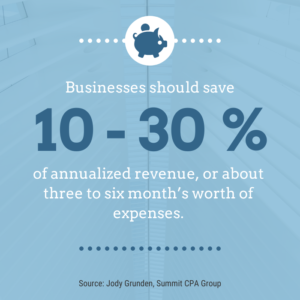How to build a pandemic-proof business plan for 2021
November 2, 2020
 Contributed by Alexis Maness, contributing editor at 365businesstips.com.
Contributed by Alexis Maness, contributing editor at 365businesstips.com.
Nearly 100,000 businesses have permanently closed due to COVID-19. And with no end in sight for returning to business as usual, that number can be intimidating to anyone who’s considering opening their own business or entrepreneurs hoping to survive the next year.
If there’s one thing that the COVID-19 pandemic has taught us, it’s that you can’t predict the future but a little preparation can go a long way.
So, what do you need to include in your business plan in order to make it pandemic proof? We’ll cover the essentials in this post, but first, here are some key elements you need to keep in mind when creating your business plan. The most important characteristics of a good business plan include:
- Flexibility
- Practicality
- Clear definitions
- Actionable items
- Well-researched
Make a plan for transitioning to remote
One of the biggest hurdles businesses have had to address is moving their business operations from in-office to remote. While some industries (like tech-based businesses) have been able to adapt fairly easily, others have struggled.
When you assess your business or your startup idea, ask yourself how you can plan to go virtual. Consider safety measures and employee health. Your team should remain just as effective working remotely as they would working in the office—with the exception of a few industries such as restaurants and certain stores.
So, how do you make certain that’s the case moving forward? First, establish the steps needed to transition remote. Next, identify official processes and protocal for remote work to ensure work-from-home success. For example, are you set up with the right collaboration tools and file-sharing platforms? Will you require employees use video conferencing applications?
With the right remote work plan in place, you can even offer work-from-home opportunities as rewards for hard work or as a company-wide benefit. After all, the option to work remotely is one of the most desired work perks.
 Create a strong budget
Create a strong budget
Another one of the challenges that businesses have faced is financial instability throughout the pandemic. So much so that many businesses—both small and large—have shuttered their doors forever. In fact, according to Yelp data, approximately 60 percent of businesses that closed in response to the pandemic, have permanently shuttered.
What can you learn from these businesses? You want to do whatever you can to prevent the same financial crisis from happening to your company in the case of future pandemic, natural disaster or other emergency economic situation.
The first thing to do is to get your budget in order and determine what you need in your emergency fund. During the pandemic, business leaders who understood that cash is king survived.
According to Jody Grunden, Summit CPA Group, businesses should save 10 percent to 30 percent of annualized revenue, or about three to six month’s worth of expenses. Having a cushion of cash to fall back on can be the difference between being able to cover your operational costs and ending up like another statistic.
While financial planning is a key component of any business plan, it’s even more critical as we come out of the pandemic and prepare for the future to make sure we can withstand something similar in the future.
Have a future-focused mindset
As always, when you’re creating a business plan, you want to consider the future, not just the year you’re planning for. So, as you work on your plan for 2021, don’t fall into tunnel vision. Keep in mind the effect your moves could have on your business for the next five or even 10 years.
When setting your vision, initiatives and strategy for 2021, keeping your business open and finding creative ways to bring in revenue will be essential. That said, you also want to make sure you’re not making moves that are going to completely derail your long-term business goals and stability.
As you make decisions based on your company’s current position and the pandemic-affected economy, take steps that will help your business get back on track—whether that’s providing incentives to get customers back through the door or restructuring certain departments. How will you recoup losses, get your staff back up to normal capacity, transition employees back to the office, and so on?
Answering these questions will help you make the best decisions for your business now and in the future. Additionally, make sure you pay attention to trends in both your regional economy and the global economy. Major changes in the world economy and consumer behavior can be good indicators of what to expect.
Creating a well-thought-out business plan for 2021 is the first step to making your company pandemic-proof in the coming years. Keep in mind, however, that a plan is never set in stone. Be ready to pivot as needed and make adjustment as the year unfolds.
Contributed by Alexis Maness, contributing editor at 365businesstips.com.